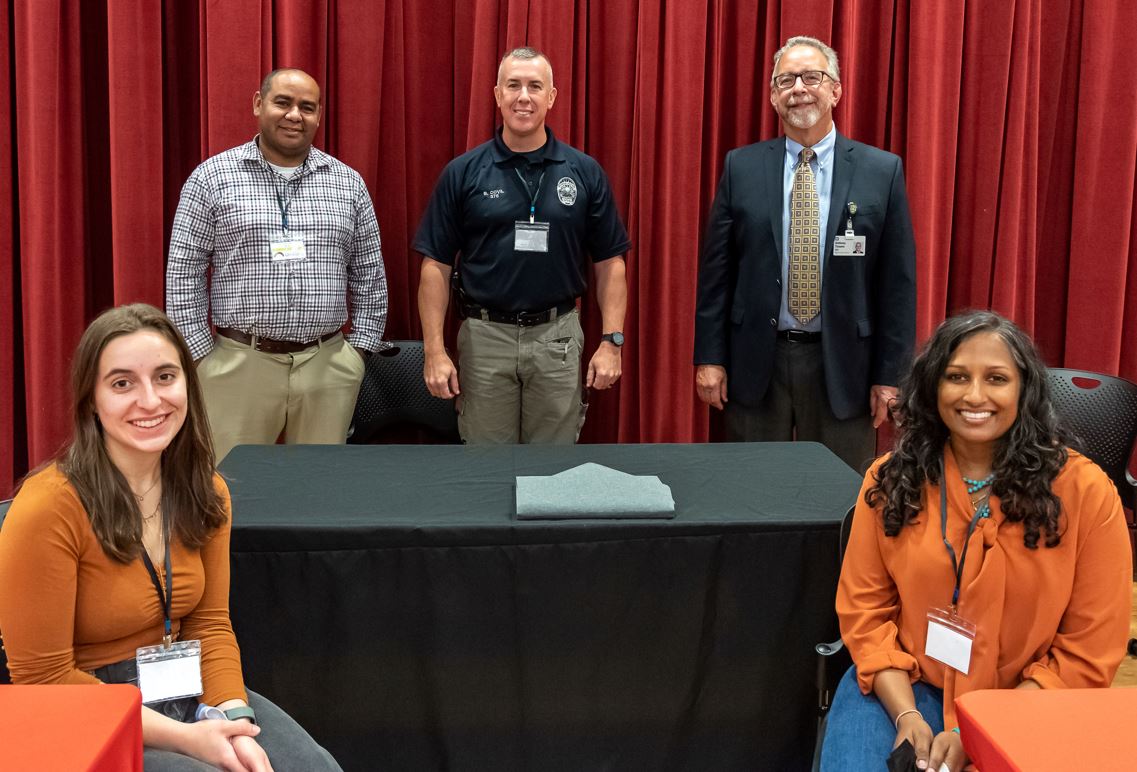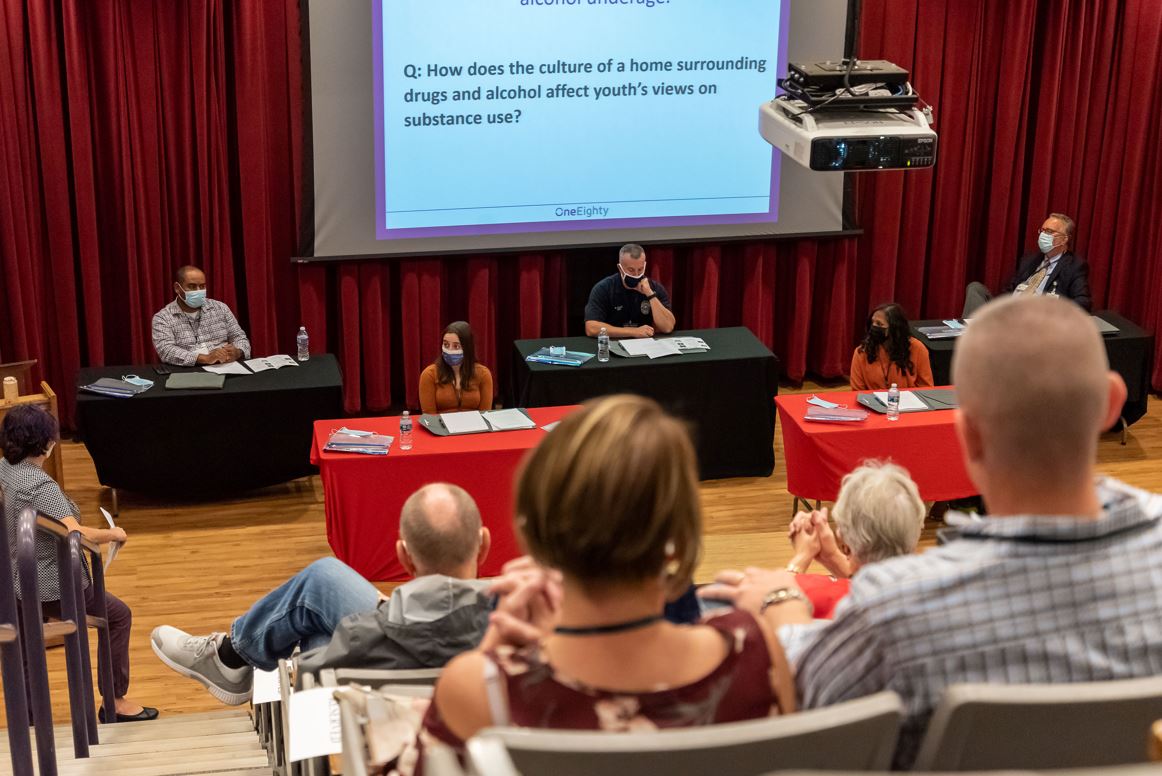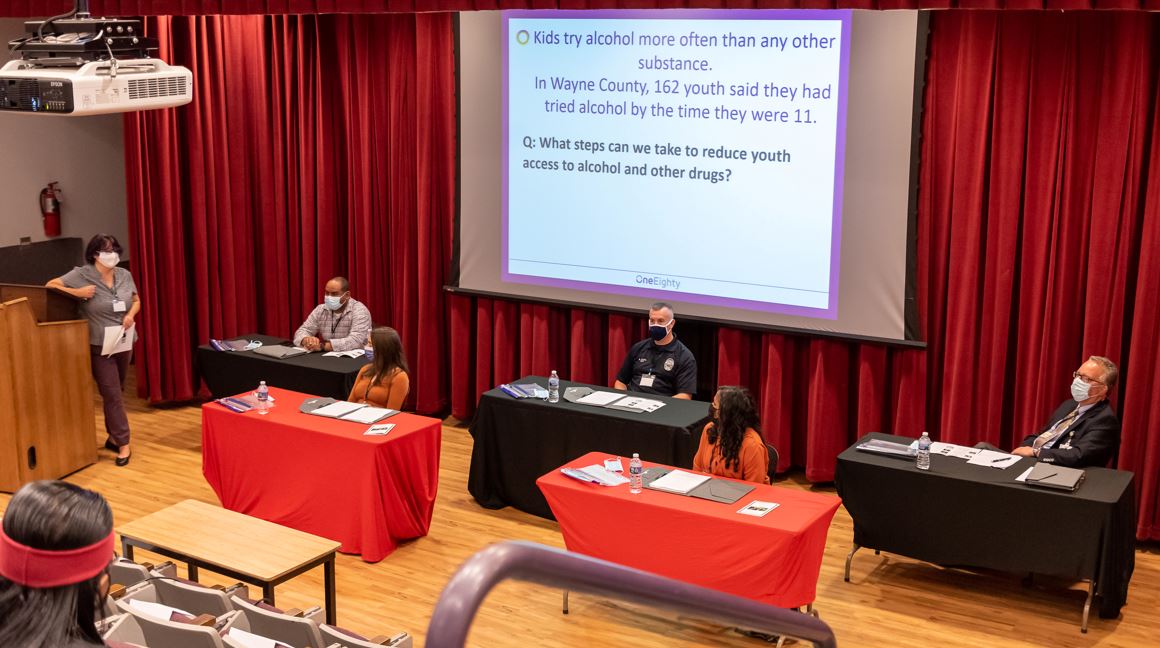|
Back to Success Stories
Families Talk Prevention
Hosted by:
Rittman SALT Coalition

Please briefly describe your Communities Talk activity.
Our coalition put together a planning committee that met several times and included members from other coalitions in the county as well. Each committee member took on a different aspect of the planning. Our event was offered both in person and virtually, but the in-person event drew more people, with the catering provided by a local family-owned business!
We called our event “Families Talk Prevention” because we wanted to highlight how important it is for families to come together to discuss prevention. Our event was a panel discussion on youth substance use in our county based on data research, and the panelists also talked about asset building. We provided a space for the audience members to submit questions to the panelists. To raise awareness of this event, we used radio, newspaper, social media, and website ads and announcements and distributed printed flyers and posters. At the event, several community partners distributed materials, including resources from SAMHSA’s Talk. They Hear You. campaign.

How does alcohol and other drug misuse affect your community?

Alcohol is the easiest substance for youth to get, and they reported that they try alcohol more often than any other substance. In Wayne County, 162 youth said they had tried alcohol by the time they were 11 years old (2019 Wayne County Youth Assessment Survey). In just one month in Ohio, 142 teens died in alcohol-attributed accidents (2018 Ohio State Report – Underage Drinking Prevention and Enforcement). A total of 77 out of 2,400 youth said that they vaped every day in the past year; 26% of Wayne County youth said their parents wouldn’t really mind if they drank alcohol underage (2019 Wayne County Youth Assessment Survey).

What goal(s) did you hope to accomplish with your Communities Talk activity?
- Reduce prevalence of underage drinking and other substances in community
- Create an ongoing conversation about underage drinking and substance use prevention in the community
- Foster collaboration between community stakeholders for continued underage drinking and substance use prevention activities

What challenge(s) did you face in planning your activity this year?
- Needed additional resources to conduct activity
- Lack of interest from the community
- Lack of promotion/awareness of our activity or organization
- Adapting to conducting a virtual activity

How did you overcome these challenges?
We realized we needed better video and sound equipment to make the online presence more professional. Since then, we have purchased that needed equipment. In terms of lack of promotion and interest, those have been ongoing issues in our community for a while. We are discussing creative ways to work through these challenges as a coalition, particularly through recruitment and cultural competency.

What are your next steps?

- Expand our coalition with new partnerships in the community
- Support new prevention policies, legislation, or social ordinances
- Conduct research efforts to learn more about issues in our community

Which Communities Talk resources (or other SAMHSA resources) were most helpful for your activity?

- Communities Talk website
- Communities Talk planning guides
- Communities Talk toolkits

Who did you involve in your activity planning, and who did your activity impact?
Our primary audience was families, which is why we considered school calendars when we planned the date of the event and also why we made it available online. When we planned the event, we sent out several emails to everyone on our coalition email lists, which includes hundreds of people from all the sectors, inviting them to join us. Our planning efforts included youth, nonprofit organizations, school leaders, police officers, business leaders, and more.

Did the COVID-19 pandemic affect the planning or execution of your activities?
COVID-19 did reduce our in-person numbers, but we had a lot of views online. Additionally, we blocked off rows for distanced seating and provided/strongly encouraged masks for our volunteers, panelists, and guests. For the catering, we made sure we picked food that would be set up in individual portions to reduce germs, and hand sanitizer was set up at several stations.
|
|